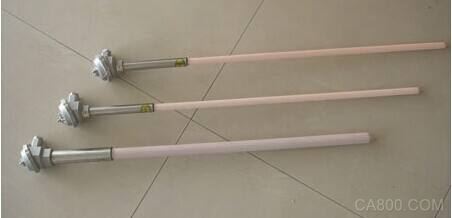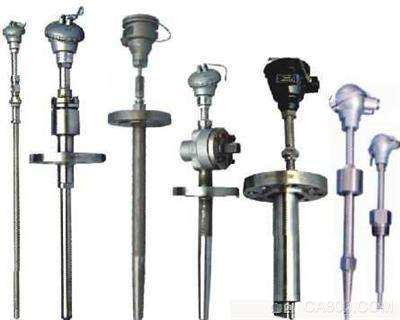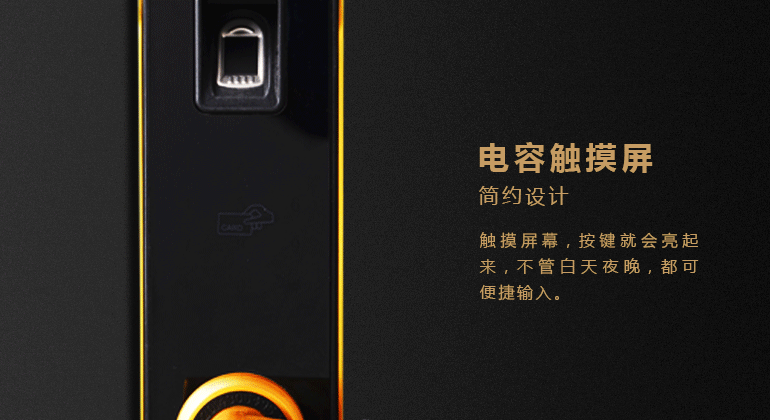Introduction In industrial production, temperature is one of the important parameters that need to be measured and controlled. In the temperature measurement, the thermocouple is widely used. It has many advantages such as simple structure, easy manufacture, wide measuring range, high precision, small inertia, and easy output of the output signal. In addition, since the thermocouple is an active sensor, it requires no external power supply for measurement, and it is very convenient to use. Therefore, it is often used to measure the temperature of a gas or liquid in a furnace or a pipe, and the surface temperature of a solid. WRP-120B explosion-proof thermocouple working principle When there are two different conductors or semi-conductors A and B that form a loop and their two ends are connected to each other, as long as the temperatures at the two junctions are different, the temperature at one end is T, which is called working end or hot end, and the other end is at temperature T0 Called the free end (also called the reference end) or the cold end, an electromotive force is generated in the loop. The direction and size of the electromotive force are related to the material of the conductor and the temperature of the two contacts. This phenomenon is called "thermoelectric effect", and the circuit composed of two conductors is called "thermocouple". These two kinds of conductors are called "hot electrodes", and the generated electromotive force is called "thermal electromotive force." The thermo-electromotive force consists of two parts of electromotive force, one is the contact electromotive force of the two conductors, and the other is the thermoelectric emf of a single conductor. The size of the thermoelectromotive force in the thermocouple circuit depends only on the temperature of the conductor material and the two contacts that make up the thermocouple, and is independent of the shape and size of the thermocouple. When the two electrode materials of the thermocouple are fixed, the thermo-electromotive force is the temperature t and t0 of the two junctions. The function is poor. That is, the basic principle of thermocouple temperature measurement is that two different compositions of material conductors form a closed loop. When there is a temperature gradient at both ends, a current will flow through the circuit. At this time, there is an electromotive force between the two ends—a thermal electromotive force. This is the so-called Seebeck effect. The two different compositions of homogenous conductors are hot electrodes, with the higher temperature end being the working end, the lower temperature end being the free end, and the free end generally being at a constant temperature. According to the function relation of the thermo-electromotive force and the temperature, a thermocouple index table is made; the index table is obtained when the free end temperature is 0° C., and different thermocouples have different index tables. When the third metal material is inserted in the thermocouple loop, the thermoelectric potential generated by the thermocouple will remain unchanged as long as the temperature of the two junctions of the material is the same, that is, it is not affected by the third metal in the loop. Therefore, when the thermocouple measures temperature, it can be connected to the measuring instrument. After the thermoelectromotive force is measured, the temperature of the measured medium can be known. When the thermocouple measures the temperature, the temperature of the cold end (the measuring end is the hot end and the end connected to the measuring circuit through the lead wire is called the cold end) remains unchanged, and the thermoelectric potential size has a certain proportional relationship with the measuring temperature. If the temperature of the cold end (ambient) changes during measurement, the accuracy of the measurement will be seriously affected. Take some measures at the cold end to compensate for the effects of changes in the cold junction temperature. The cold junction compensation known as a thermocouple is normal. Dedicated compensation wires for connection with measuring instruments. Thermocouple cold junction compensation calculation method: From millivolt to temperature: measure the cold junction temperature, convert to the corresponding millivolt value, and add the thermocouple's millivolt value to convert the temperature; From temperature to millivolt: The actual temperature and the cold junction temperature are measured and converted to millivolts, respectively, and the millivolt value is subtracted to obtain the temperature. Temperature conditions Thermocouple is a kind of temperature sensor. It is a kind of primary instrument. The thermocouple directly measures the temperature. A closed circuit composed of conductors of two different composition materials, due to different materials, generates electron diffusion due to different electron densities, and generates a potential after stable equilibrium. When there is a gradient temperature at both ends, a current will be generated in the loop, generating a thermal electromotive force. The larger the temperature difference, the larger the current. After the measured thermo-electromotive force, the temperature value can be known. A thermocouple is actually an energy converter that converts thermal energy into electrical energy. The technical advantages of thermocouples: thermocouple wide temperature measurement range, performance is relatively stable; measurement accuracy, thermocouple and measured object is in direct contact, not affected by the intermediate medium; fast thermal response time, thermocouple response to temperature changes; Measuring range is large, thermocouple can continuously measure temperature from -40~+1600°C; thermocouple performance is reliable and mechanical strength is good. Long service life and convenient equipment. The galvanic couple must be composed of two conductors (or semiconducting) materials that are different in nature but meet certain requirements. There must be a temperature difference between the thermocouple measuring terminal and the reference terminal. Two different data conductors or semiconductors A and B are welded together to form a closed loop. When there is a temperature difference between the two sticking points 1 and 2 of the conductors A and B, an electromotive force is generated between the two sticking points 1 and 2 so that a current of a size is formed in the loop. This phenomenon is called a thermoelectric effect. Thermocouples work by applying this effect. WRP-120B Flameproof Thermocouple Measurement Method The thermal response time is relatively complex, and different test conditions will have different measurement results, because it is affected by the heat transfer rate of the thermocouple and the surrounding medium, and the heat exchange rate is high, so the thermal response time is short. In order to make the thermal response time of thermocouple products comparable, national standards stipulate that the thermal response time should be performed on a dedicated flow test device. The flow rate of the device should be maintained at 0.4±0.05 m/s, the initial temperature is in the range of 5-45°C, and the temperature step is 40-50°C. During the test, the temperature of the water shall not vary by more than ±1% of the temperature step. The depth of placement of the thermocouple to be tested is 150mm or the designed depth of placement (select the smaller one and indicate in the test report). installation In production, due to the different objects to be measured, different environmental conditions, different measurement requirements, and installation methods and measures taken for thermal resistance are also different, there are many issues to consider, but in principle the accuracy and safety of temperature measurement can be , easy maintenance to consider in three aspects. In order to avoid damage to the temperature measuring element, ensure that it has sufficient mechanical strength. To protect the temperature sensing element from wear, protect the screen or protect the tube. To ensure safety and reliability, install the temperature measurement element according to the specific conditions ( Such as the temperature of the medium to be measured, the pressure, the length of the temperature measuring element, and its installation position, form, etc.). Here are just a few examples to draw attention to: Where to install a temperature measuring element under pressure, it must ensure its tightness. Thermocouples operating at high temperatures are generally installed vertically to prevent deformation of the protective tubes at high temperatures. If they must be installed horizontally, the thermocouples should not be too long and the thermocouples should be protected by brackets. If the temperature measuring element is installed in a pipe with a large medium flow rate, it should be installed at an angle. To prevent the temperature measuring element from being subjected to excessive erosion, it is best to install it in the bend of the pipe. When the medium pressure exceeds 10 MPa, a protective jacket must be added to the measuring element. The installation location of thermocouple/thermal resistance should also consider enough space and site for disassembly, maintenance and calibration. Thermocouples and thermal resistances with longer protection tubes should be easily disassembled and installed. Installation requirements For the installation of thermocouples and thermal resistors, attention should be paid to the accuracy of temperature measurement. Safety can be tested and maintained without affecting equipment operation and production operations. To meet the above requirements, the following points must be taken into consideration when selecting the mounting location and insertion depth for thermocouples and thermal resistors: 1. In order to allow sufficient heat exchange between the measuring end of the thermocouple and the RTD and the measured medium, the location of the measuring point should be reasonably selected so as to avoid installing thermocouples near the dead angles of valves, elbows, pipes and equipment or Thermal resistance. 2. Thermocouples and thermal resistors with protective sleeves have heat transfer and thermal losses. In order to reduce measurement errors, thermocouples and thermal resistors should have a sufficient depth of insertion: (1) For thermocouples that measure the fluid temperature in the center of the pipe, Generally, the measuring end should be inserted into the center of the pipe (vertically or obliquely). If the pipe diameter of the fluid to be measured is 200 mm, the insertion depth of the thermocouple or RTD should be 100 mm. (2) For the temperature measurement of high temperature, high pressure and high speed fluid (such as main steam temperature), in order to reduce the resistance of the protective sleeve to the fluid and prevent the protective sleeve from breaking under the action of the fluid, the protective tube can be inserted in a shallow insertion manner or a hot sleeve can be adopted. Thermocouple, shallow insertion type thermocouple protection sleeve, the depth of its insertion into the main steam pipe should not be less than 75mm; the standard insertion depth of hot-set thermocouple is 100mm; (3) If it is required to measure the temperature of the flue gas in the flue, although the flue diameter is 4m, the thermocouple or RTD can be inserted to a depth of 1m; (4) When measuring the depth of the original inserted more than 1m, it should be installed as far as possible vertically, or install support frame and protective sleeve. Troubleshooting Thermocouple input fault identification method: After the correct wiring is connected according to the meter wiring diagram, the meter first displays the thermocouple index number of the meter. Then display the range of the instrument range, and then measure the set temperature of the digital tube in the lower row of the instrument. The digital tube on the upper row of the instrument displays the measured temperature. If the digital display on the upper row of the meter is not the temperature of the heating element, and the status of “OVERâ€, “0000†or “000†is displayed, it means that the input part of the instrument is malfunctioning. The following test should be performed: 1) Remove the thermocouple from the input of the instrument thermocouple and use any wire to short-circuit the thermocouple input. When the power is on, the digital display on the upper row of the instrument is about room temperature, indicating that the thermocouple's internal connection is open, and the same type of thermocouple should be replaced. If it is still the above-mentioned situation, it means that the meter's input end is damaged during the transportation process, and the meter must be replaced. 2) Remove the thermocouple of the above-mentioned fault meter and replace the thermocouple connected to the meter with the same kind of indexing instrument running next to it. After the power is turned on, the upper faulty indicator on the upper digital tube shows the temperature of the heating element, indicating the thermocouple. Open the line and replace the same type of thermocouple. 3) Remove the faulty thermocouple from the meter and use a multimeter to measure ohms (R)*1. Use two multimeters of the multimeter to measure both ends of the thermocouple. If the multimeter shows a large resistance value, it means that the thermocouple's internal connection is open and the thermocouple of the same type is replaced. Otherwise there is a certain resistance, indicating that there is a problem with the input of the instrument, and the instrument should be replaced. 4) According to the wiring diagram of the meter, the wiring is correct. If the meter is powered on, the digital tube on the meter shows a negative value, which indicates that the “+†and “—†of the thermocouple connected to the meter are connected incorrectly. Just change it again. 5) Correct wiring When the instrument is in operation, the temperature displayed on the digital tube on the meter is different from the actual measured temperature by 40 degrees to 70 degrees. The difference is even greater, indicating that the meter's index number is wrong with the thermocouple's index number. According to the thermocouple index number B, S, K, E and other thermocouple temperature and millivolt (MV) value of the corresponding relationship, the same temperature, the resulting millivolt value (MV) B minimum number of graduations S, the number of sub-degrees is small, the number of K-divisions is larger, and the number of E-divisions is the largest, which is judged according to this principle. WRP-120B explosion-proof thermocouple use: widely used in powder metallurgy, sintering bright furnace, vacuum furnace, smelting furnace, glass, steel furnace and ceramic and industrial salt bath furnace temperature measurement! Is it super! Plus 6000 Puffs Disposable ecig have a completely enclosed design, reducing the need for charging and replacing cartridges. The no-charge design also reduces the occurrence of faults. It is understood that with rechargeable e-cigarettes, each cartridge needs to be charged at least once and the battery efficiency is extremely low, while the design of disposable ecig can solve this problem very well. 6000 Puff Disposable Vape,Disposable Mini Vape Stick,Puff Disposable Vape,Mini Puff Disposable Vape Shenzhen E-wisdom Network Technology Co., Ltd. , https://www.healthy-cigarettes.com
Due to the complexity of the device, only a very small number of units currently have this device. Therefore, the national standard allows the manufacturer to negotiate with the user. Other test methods may be used, but the data given must specify the test conditions.
Since the B-type thermocouple has a small thermoelectric potential near room temperature and the thermal response time is not easy to measure, the national standard specifies that the thermoelectrode assembly of the same type of S-type thermocouple can be used to replace its own hot electrode assembly and then tested.
During the test, the output of the thermocouple shall be recorded to a time T0.5 corresponding to 50% of the temperature step change. If necessary, the thermal response time T0.1 may vary by 10%, and the thermal response time T0.9 may vary by 90%. The recorded thermal response time should be the average of at least three test results for the same test. The deviation from the average of each measurement result should be within ±10%. In addition, the time required to form a temperature step change should not exceed one tenth of T0.5 of the thermocouple being tested. The response time of the recording instrument or meter should not exceed one-tenth of the T0.5 of the thermocouple being tested. 

March 14, 2023